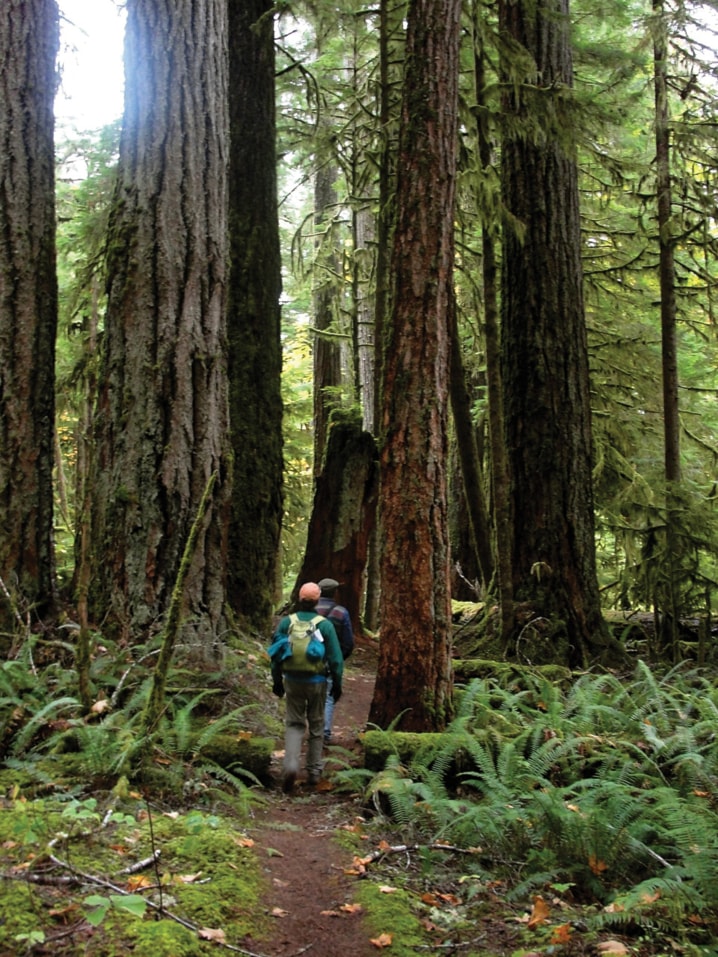By CAROL PATTERSON
Special to the Advocate
Ask your friends if a traveller needs a tour guide and the answer is often a resounding no! We Canadians are fiercely independent, and do not think we need an expert to show us around, especially in our own country.
But I beg to differ.
I think visiting a destination without spending time with a local expert is like watching TV with the sound off. Everything looks great but you are not sure what you are looking at.
When my husband and I took a trip to Vancouver Island, a place I have visited dozens of times, I wanted to see something different, and I thought a guided trip might offer new sights and new insights.
Searching a Vancouver Island travel app, I found a half-day tour of fish watching amid old-growth rainforests. I thought watching a creature fight its way up a rushing river, while avoiding hungry bears, sounded like reality TV, Mother Nature-style, and a great holiday experience.
Sandy McRuer’s of Rainbird Excursions agreed to meet us and when his van pulled up, sporting a bird logo in the rugged forestry community of Port Alberni, I figured we were in for some local colour.
I was not disappointed.
Sandy had worked for years in forestry before starting a guiding service.
“I’ve been doing this for six years,” Sandy explained good-naturedly, “and I don’t make any money from it. People think they can do it themselves.” And then he proceeded to prove them wrong.
Sandy led us to trees several hundred years old. “It’s like Cathedral Grove (a popular Vancouver Island park),” Sandy said, “except there are no other people around.”
But we weren’t alone in the old-growth forest. The smell was the first hint. Usually, I like to breathe deeply while walking in the woods. This time, not so much. It smelt like rotten flesh and when I almost stepped on my first fish, I knew why.
Judging by the 10-kg weight of the fish lying at my feet, I knew this was no flying fish. Something fairly large had dragged this fish into the forest and I was pretty sure it was not a raccoon.
“Bears,” Sandy explained, “But it might have been left because it was rotten and didn’t taste good.”
Without looking too hard, we found a dozen large fish along the trail.
Suddenly, the forest that had seemed so deserted only a few minutes earlier now looked a busier place as I saw evidence of bear movement all around us.
Sandy explained that forests near salmon rivers have larger trees. Scientists discovered that vegetation gains valuable nutrients from the fish left by the bears, something I would not have learned without a guide!
We then visited the popular Stamps Falls’ fish ladders, jostling with other tourists for photographs until Sandy led us to a lesser-known pool where the fish rested before assaulting the falls.
After watching fish after fish jump along the water’s surface, I was humbled by their efforts to fulfil their fishy destiny.
I also wondered, “What was Mother Nature thinking?” I mean, really, there has to be an easier way to reproduce than by battering against millions of liters of rushing water!
Our trip ended all too quickly, but Sandy suggested other stops and tips on where to spot the fishing bears.
He was not able to answer my questions on where to spot a lake monster (apparently B.C. has more lake monsters than anywhere in the world), but his guiding skills added immeasurably to this trip.
So for less than a round of golf, I was far wiser about one of Canada’s natural phenomena and I had some great video.
Next time, maybe I’ll find a crypto-zoological guide to track one of those lake monsters.
Carol Patterson of Kalahari Management Inc. has been speaking and writing about nature tourism and emerging destinations for two decades. When she isn’t travelling for work, she is travelling for fun. More of Carol’s adventures can be found at www.kalahari-online.com.
